AI Safety Compliance: How Smart Cameras Prevent 80% of Construction Accidents
Taher Pardawala September 19, 2025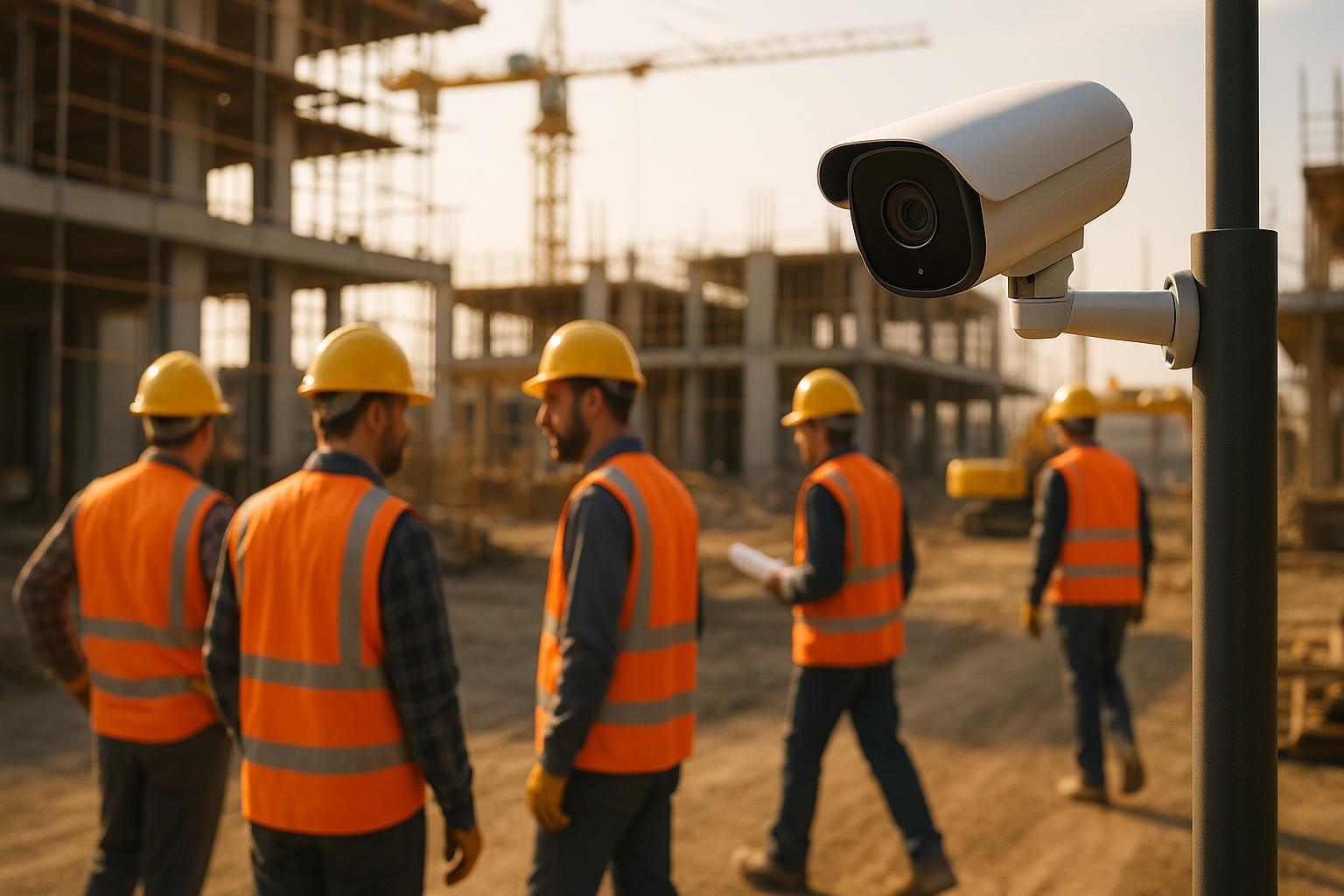
AI-powered smart cameras are cutting construction accidents by 80% by identifying hazards in real time, ensuring compliance, and reducing risks. These systems use advanced computer vision and machine learning to monitor worksites 24/7, spotting unsafe behaviors, missing protective gear, and dangerous conditions as they happen.
Key benefits include:
- Real-time alerts: Immediate notifications for safety violations.
- Worker safety monitoring: Ensures proper use of PPE and adherence to safety protocols.
- Regulatory compliance: Automates incident logging and reporting for OSHA inspections.
- Predictive analytics: Anticipates risks using historical data and environmental factors.
How Smart Cameras Detect and Prevent Hazards
Real-Time Hazard Detection and Alerts
AI-powered smart cameras use advanced computer vision algorithms to keep a constant watch on construction sites, scanning for safety violations and potential hazards. These cameras rely on neural networks trained to recognize specific safety patterns, allowing them to analyze live video feeds and immediately identify issues like missing hard hats or unsafe equipment use.
When a violation is detected, instant alerts are sent via mobile apps, text messages, or email, enabling safety teams to act quickly. With cloud integration, managers can maintain remote oversight of multiple sites, ensuring that interventions happen promptly – far faster than traditional manual reviews.
Behavior Recognition and Risk Zoning
These systems go beyond just spotting hazards; they also monitor worker behavior and manage risk zones dynamically. By analyzing movement patterns, AI cameras can differentiate between routine activities and actions that might lead to accidents, such as workers rushing near excavation areas or failing to maintain a safe distance from machinery.
The technology also verifies whether workers are wearing the proper personal protective equipment (PPE). By comparing observed gear – like hard hats, vests, boots, and eye protection – against site requirements, it ensures compliance with safety standards.
Risk zones are adjusted in real time based on conditions. For example, during hot weather, the system might focus on heat-related risks, while in colder conditions, it could prioritize slip hazards. Virtual safety perimeters are also established around machinery and restricted areas. If a worker gets too close to these high-risk zones, the system alerts both the individual and their supervisors. These boundaries can be modified on the fly as work conditions change, providing a flexible and responsive safety net.
Manual Monitoring vs. AI-Powered Systems
The advantages of AI-powered safety systems become clear when compared to traditional monitoring methods:
| Aspect | Manual Monitoring | AI-Powered Systems |
|---|---|---|
| Response Time | Delayed due to inspections | Near-instant alerts |
| Coverage Area | Limited field of view | Full-site monitoring |
| Detection Accuracy | Prone to human error | Consistent and reliable |
| Operating Hours | Limited to shifts | 24/7 surveillance |
| Documentation | Requires manual effort | Automatic logging with video evidence |
| Cost Efficiency | Labor-intensive | Automated and cost-effective |
| Compliance Tracking | Periodic checks | Real-time dashboards |
AI systems provide continuous, accurate monitoring that minimizes human error and increases efficiency. They track multiple safety metrics simultaneously and produce detailed reports, helping teams identify recurring problems and trends. In complex environments with numerous safety protocols, this capability ensures a proactive approach to site safety.
These advanced features set the stage for exploring the key components that make AI safety compliance tools indispensable.
Key Features to Look for in AI Safety Compliance Tools
Core AI-Driven Features for Construction Safety
When evaluating AI safety tools for construction, there are a few must-have features to keep in mind. One critical feature is real-time video analytics. The best platforms combine computer vision with machine learning, enabling cameras to analyze live video feeds and instantly identify hazards. This technology can catch safety risks the moment they arise, giving teams the chance to act before accidents happen.
Another essential feature is PPE detection. The system you choose should be able to accurately recognize personal protective equipment, even in tough conditions where workers might be partially hidden by machinery or scaffolding. This ensures that safety standards are consistently met, no matter the situation.
Unauthorized access alerts are equally important. These systems can identify when someone enters restricted areas or gets too close to dangerous equipment without the proper clearance. With virtual perimeter controls, you can adjust these boundaries in real time to match changing worksite conditions, adding a layer of flexibility to your safety protocols.
Automated reporting is another game-changer. These tools can generate detailed incident reports that include video evidence, timestamps, and worker IDs. This documentation not only helps during OSHA inspections but also provides insights into recurring issues that might go unnoticed with manual monitoring.
Finally, don’t overlook mobile accessibility. The ability to receive instant notifications through a smartphone app ensures that safety managers can respond quickly, whether they’re on-site or overseeing multiple locations remotely.
Predictive Analytics and Risk Management
AI safety tools have stepped up their game with predictive analytics, a feature that can identify potential hazards before they lead to accidents. These systems analyze a mix of historical data, current site conditions, and environmental factors to forecast risks with precision.
Take Suffolk Construction, for example. In 2020, they teamed up with AI startup Smartvid.io to create "Vinnie Predictive Analytics." By training the AI on 10 years’ worth of project photos, data, and images, they achieved an impressive result: the system could predict 20% of incidents within a sample, with 80% accuracy [1].
According to McKinsey, AI-based predictive tools can reduce construction site accidents by up to 30% [3].
Shawmut Design and Construction has also embraced predictive analytics. Their system pulls data from sources like the National Weather Service and personnel records. For instance, if a surge in new hires coincides with a lack of experienced supervisors, the AI flags this as a potential safety risk.
"You’re talking about a business that, quite literally, 20 or 30 years ago was driven by paper and clipboards. Anything we can do to leverage technology, we’ll do it." – Shaun Carvalho, Chief Safety Officer, Shawmut Design and Construction [2]
The financial impact of avoiding accidents is significant. Each incident can cost between $20,000 and $30,000 [1]. Suffolk Construction’s use of predictive tools in 2020 not only improved safety but also reduced equipment downtime by 20% and cut maintenance costs by 15% [3].
For maximum effectiveness, opt for systems that can process multiple data streams simultaneously – weather forecasts, personnel schedules, equipment maintenance records, and historical incident data. The most advanced tools don’t just flag risks; they provide actionable suggestions, like rescheduling work during severe weather or conducting extra safety briefings when new workers join.
Data Privacy and U.S. Regulatory Compliance
With OSHA penalties reaching $64 million in 2022, ensuring compliance isn’t just a legal obligation – it’s a smart financial move too [5].
One key feature to look for is edge processing. This technology processes data locally, reducing latency and enhancing privacy by minimizing the need to send information to external servers. Systems that use data anonymization techniques, like blurring or masking identities, further ensure worker privacy [4][5].
"AI video analytics handles privacy concerns by anonymizing personal data, using blurring or masking techniques to obscure identities, and ensuring compliance with relevant laws and regulations. It also limits data access to authorized personnel and utilizes secure data storage and transmission methods." [5]
Clear worker consent protocols are another must. Before implementing AI cameras, workers need to be informed about how these tools will be used and their rights regarding privacy. Transparent communication about data collection, storage, and usage builds trust and ensures ethical deployment [6].
The system should also support OSHA compliance through automated documentation and reporting. During inspections or investigations, this data can serve as proof of compliance efforts. Regular audits and updates help maintain system integrity and address evolving privacy concerns [5][6].
When selecting a vendor, prioritize those that provide detailed documentation on compliance with federal and state regulations. Look for tools with customizable privacy settings, allowing you to adapt data collection to meet both regulatory requirements and worker agreements. This focus on privacy and compliance strengthens the overall effectiveness of AI safety tools.
Steps to Successfully Adopt AI Safety Cameras
Step-by-Step Deployment Process
To effectively deploy AI safety cameras, start with a comprehensive site audit. This involves identifying high-risk areas where accidents are more likely to happen. Walk through your worksite and map out zones such as areas with heavy machinery, scaffolding, excavation sites, and equipment storage. Knowing these critical spots ensures you’re focusing on areas that need the most attention.
Next, take a close look at your current infrastructure. This means reviewing your network capabilities, power availability, and mounting options. Since most AI safety cameras need reliable internet connectivity and a steady power source, addressing any gaps in these areas is essential before moving forward.
Clear communication with your team is equally important. Let them know that these cameras are there to monitor safety metrics, not personal activities. Address privacy concerns upfront, and where required by local laws, ensure you get written consent from your crew.
When it comes to camera selection and placement, follow the manufacturer’s recommendations. Proper positioning is key – mount cameras at the right height and angle to cover wide areas while minimizing blind spots. Configure the system to monitor critical safety measures like personal protective equipment (PPE) compliance and set up virtual safety perimeters around hazardous zones.
Finally, ensure comprehensive staff training. Safety managers and supervisors need to understand how to interpret alerts and respond appropriately. This step helps integrate the technology seamlessly into your daily safety protocols, making it a natural part of your operations.
Once deployed, connect the cameras with existing digital tools to build a unified safety network.
Integration with Existing Systems
For the best results, make sure your AI safety cameras integrate smoothly with your current tools. For example, you can link them to project management platforms to receive real-time safety alerts and incident reports. This integration provides a centralized view of site operations, making it easier to manage safety across the board.
Connecting cameras with IoT devices can take safety a step further. Imagine this: if a camera detects someone entering a restricted area, it could trigger warning lights or sirens to alert nearby workers immediately, reducing risks on the spot.
Another benefit is automated reporting. Instead of manually logging safety incidents, the system can generate detailed reports that include video evidence, timestamps, and descriptions. These reports can then be fed into your existing safety management software, saving time on administrative tasks.
You can also integrate communication tools like Microsoft Teams or Slack to receive instant notifications of safety violations. This ensures your team can respond quickly to any issues. Additionally, connecting the cameras to equipment management systems allows you to monitor machinery usage and flag unsafe operations, enabling timely maintenance or additional training when needed.
When choosing cameras, opt for models with open APIs. These allow the system to connect with multiple platforms easily, keeping your technology flexible and ready for future upgrades.
After integration, carefully plan the deployment timeline and budget to ensure a smooth rollout.
Deployment Timeline and Cost Considerations
Setting realistic timelines and budgets is crucial for a successful deployment. The time required for each phase – such as the site audit, infrastructure upgrades, camera installation, system setup, and staff training – will depend on the size of your site and the complexity of the system.
Don’t forget to account for recurring costs. These may include software licensing fees, cloud storage for video footage, and regular maintenance. You might also need to budget for network upgrades and ongoing staff training to keep the system running efficiently.
The good news? Many companies find the investment pays off quickly. Preventing even one major incident can often justify the cost of an AI-driven safety system. For those working with limited budgets, consider a phased deployment. Start with the highest-risk areas to see immediate improvements while spreading the costs over time.
sbb-itb-51b9a02
Ensuring Regulatory Compliance and Efficiency
Supporting OSHA Compliance with AI Tools
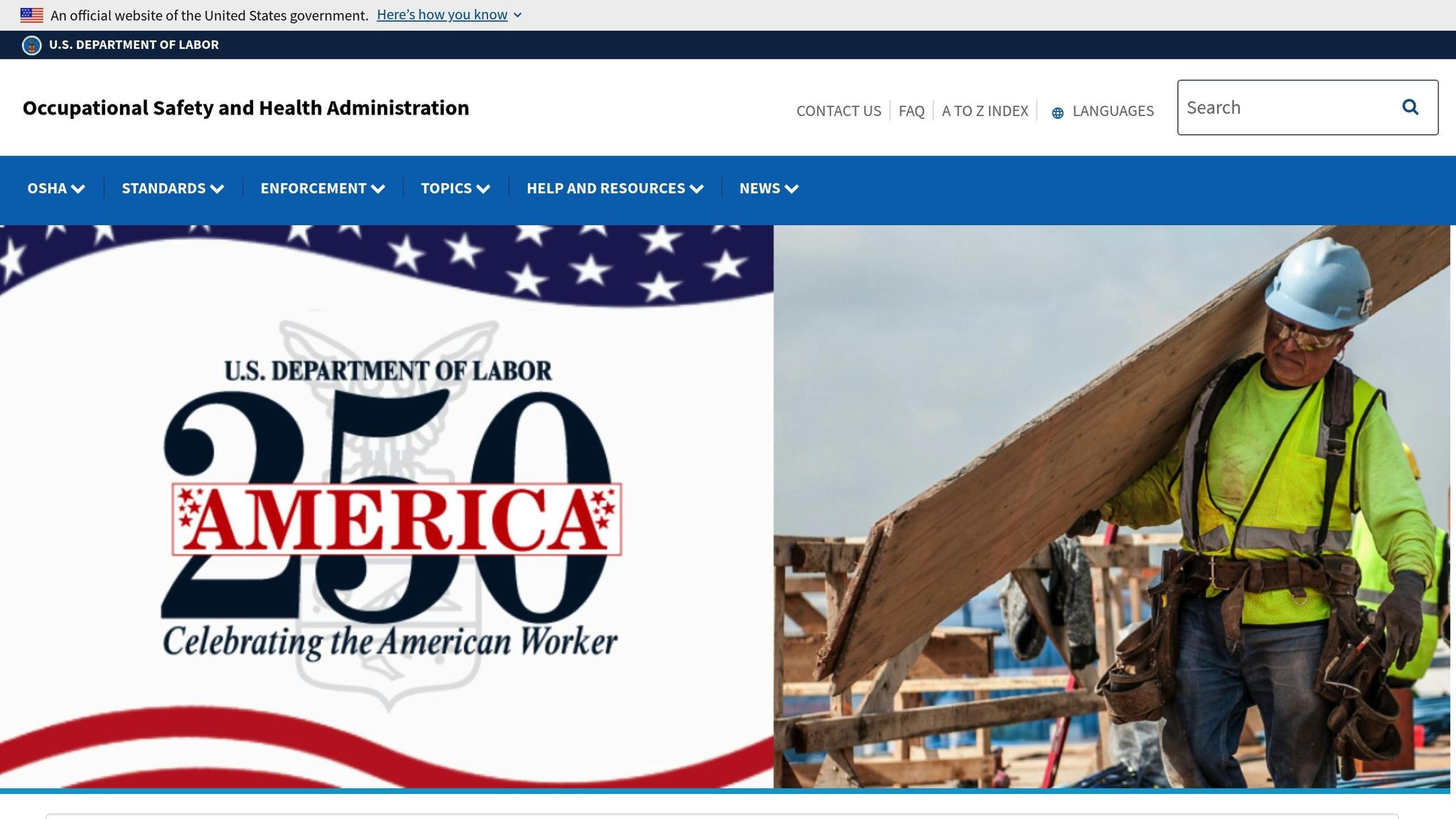
AI-powered safety cameras play a pivotal role in meeting OSHA requirements by digitally recording safety-related events. These systems create time-stamped logs and video records, which can be invaluable during OSHA inspections. By continuously monitoring the workplace, they help employers maintain a hazard-free environment, flagging issues like missing personal protective equipment (PPE) or unsafe equipment use.
These tools also streamline incident reporting by automatically flagging events and logging critical details in real time. On top of that, they support training efforts by identifying instances where safety protocols are not followed. The automated recordkeeping ensures that incident documentation is both consistent and reliable. While their primary purpose is regulatory compliance, these tools also bring tangible business benefits.
Business Benefits of AI Safety Cameras
AI safety cameras do more than just ensure compliance; they contribute to a safer and more efficient work environment. Proactively addressing safety concerns can lead to lower insurance premiums and fewer claims. Fewer workplace incidents also mean reduced disruptions, helping projects stay on schedule and improving operational efficiency.
A strong commitment to safety can also enhance employee retention. Workers are more likely to stay in environments where their well-being is prioritized. A robust safety culture reduces turnover and minimizes the costs of hiring and training new staff. Additionally, the data collected by these systems provides valuable insights, driving continuous improvements in safety practices.
Long-Term Value and Continuous Improvement
Over time, the data gathered by AI safety cameras becomes a powerful resource for enhancing workplace safety. By analyzing trends in incidents and near-misses, companies can pinpoint recurring issues and proactively improve safety protocols.
As these systems adapt to site-specific conditions, their predictive capabilities can improve, enabling earlier identification of potential risks. Tracking key performance metrics allows businesses to measure safety performance and build a strong, data-backed case for ongoing investment in safety technology.
These systems are also designed to evolve alongside changing regulations, ensuring that safety monitoring stays up to date. When implemented across multiple worksites, they enable the sharing of best practices and create a comprehensive safety record. This historical data can be a valuable asset in discussions with regulators, insurers, and even prospective clients.
EarthCam AI for Construction Safety & Documentation
Conclusion: The Future of AI in Construction Safety Compliance
The future of construction safety is becoming increasingly technology-driven, with AI taking center stage.
AI-powered smart cameras are transforming how safety is managed on construction sites. By identifying hazards in real time, these tools shift safety protocols from being reactive to proactive, helping to protect workers and reduce the likelihood of injuries.
Beyond just hazard detection, these systems simplify regulatory compliance by automatically creating detailed incident logs, which support OSHA requirements and promote a stronger safety-focused environment. With their ability to continuously learn and improve, they enhance risk assessments over time, paving the way for more effective hazard prevention. AI-driven safety tools are quickly becoming an essential part of modern construction operations.
FAQs
How do AI-powered smart cameras help construction sites comply with OSHA safety standards?
AI-powered smart cameras are transforming safety on construction sites by helping ensure compliance with OSHA standards. Using advanced computer vision, these cameras continuously monitor for potential hazards in real time. They can spot issues like missing personal protective equipment (PPE), workers entering restricted zones, or risky behaviors such as getting too close to fall hazards.
What makes these systems invaluable is their ability to flag risks instantly, allowing for quick interventions that can prevent accidents. Beyond that, they capture video evidence and create detailed compliance reports, simplifying the process of documenting safety measures. This not only safeguards workers but also helps construction companies avoid hefty fines and operate more efficiently.
How do AI-powered safety cameras detect hazards and help keep workers safe on construction sites?
AI-powered safety cameras leverage computer vision and machine learning to keep a close watch on construction sites in real time. These systems analyze live video feeds to spot unsafe actions, like workers without proper safety gear or those entering restricted zones. They can also detect hazards in the environment, such as spills or falling objects.
When a risk is identified, the system sends immediate alerts to workers and supervisors. This quick response helps prevent accidents before they occur. Beyond enhancing safety, these cameras play a key role in ensuring compliance with industry regulations, safeguarding both employees and the overall operation.
How can construction companies use AI safety cameras to improve site safety and streamline operations?
Construction companies can boost both safety and efficiency by incorporating AI safety cameras into their operations. Start by placing cameras in key locations to cover the entire site effectively. Then, link them to your site management systems for real-time updates and automated alerts. These cameras are capable of identifying hazards, anticipating risks, and enforcing safety measures, helping to minimize accidents and ensure compliance with regulations.
To keep these systems running smoothly, regular upkeep is essential. Update the software as needed, recalibrate sensors, and clean the lenses to maintain optimal functionality. By integrating AI-driven tools into your daily processes, you can create a safer workplace, protect your team, and maintain adherence to safety standards.
Related Blog Posts
- How AEC Startups Can Leverage AI for Better Project Estimation
- AI-Powered Estimation: How Machine Learning is Transforming Construction Bidding
- AI-Powered Quality Control: How Computer Vision is Revolutionizing Construction Inspections
- Automated Progress Tracking: How AI Cameras Are Replacing Manual Site Surveys

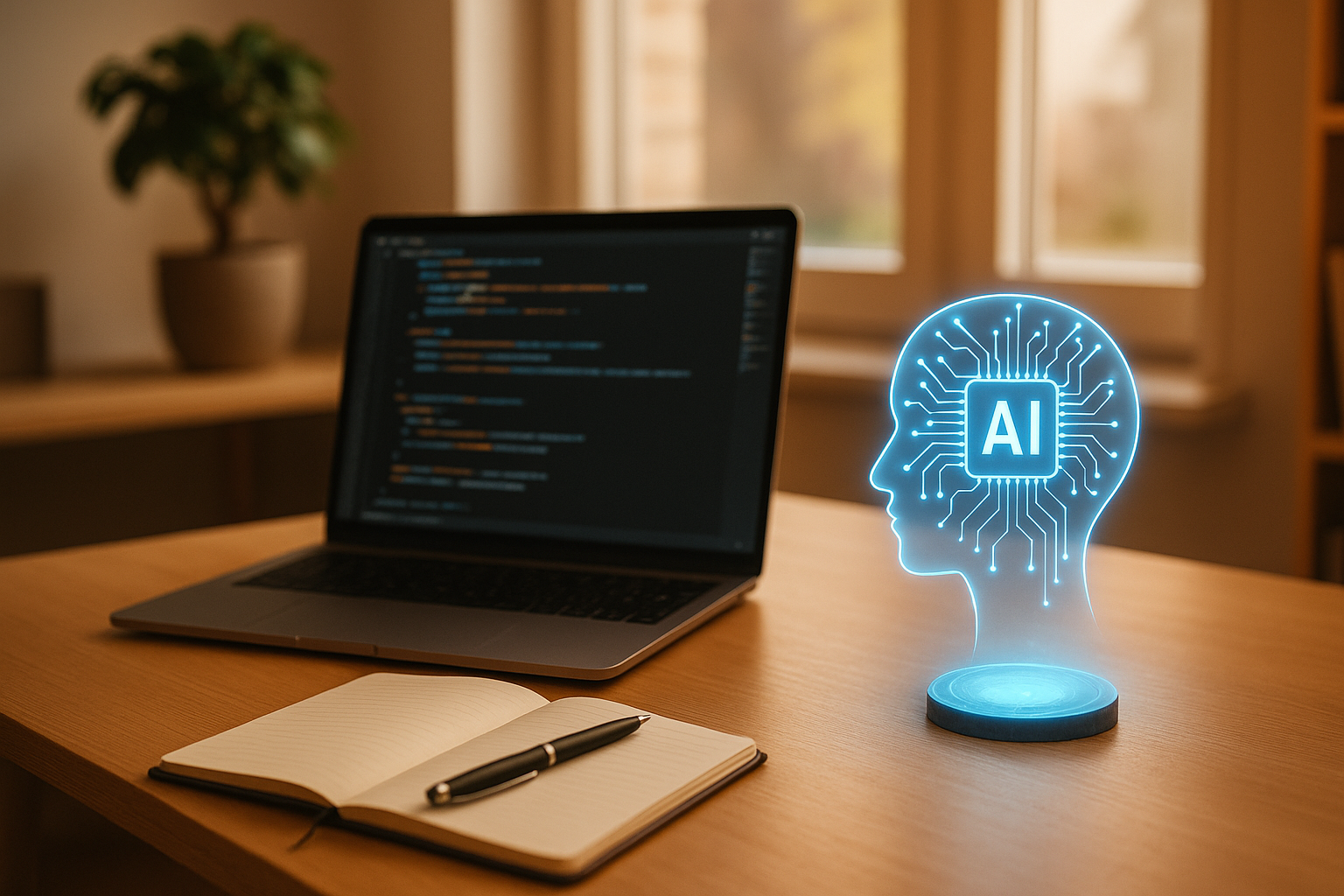
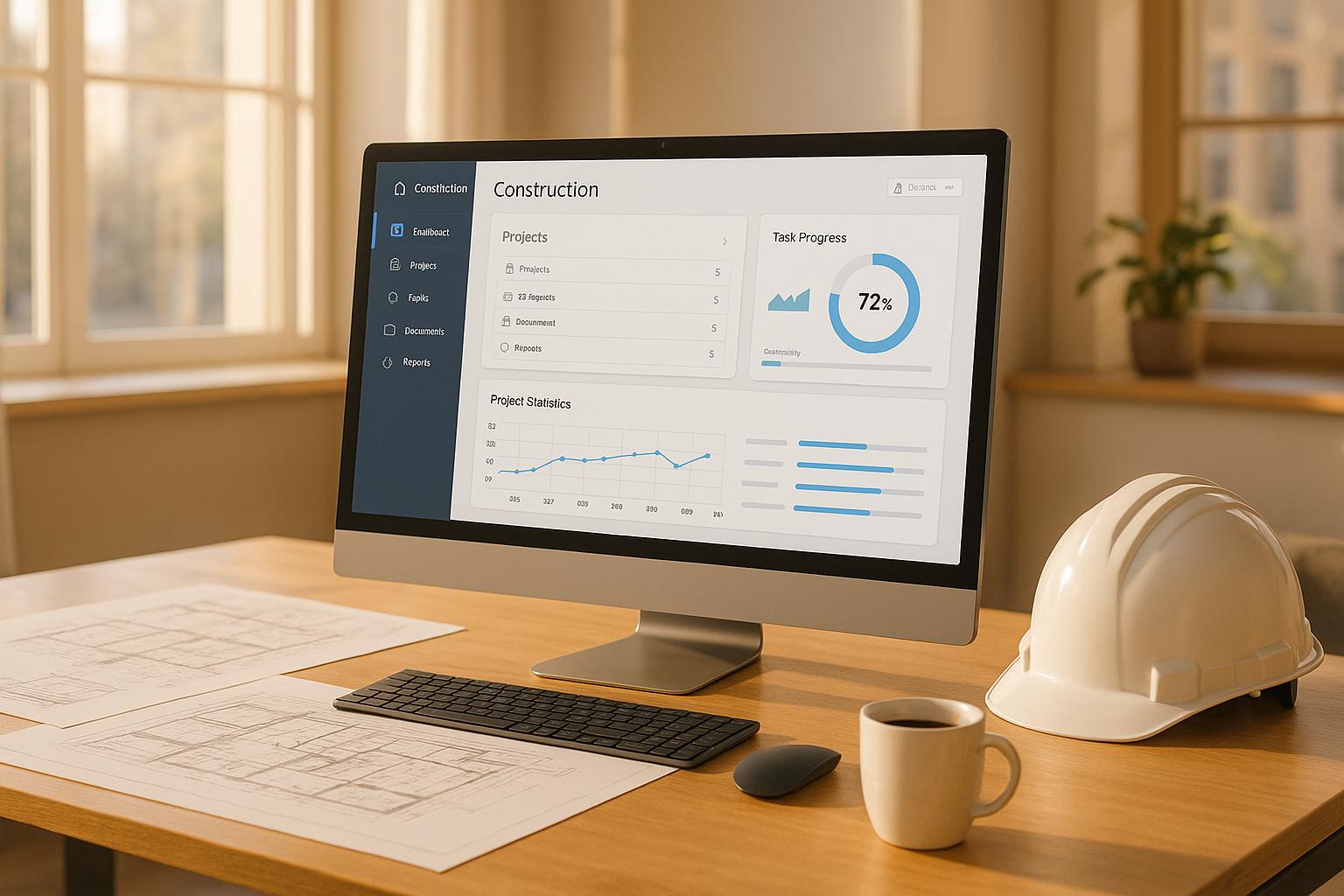
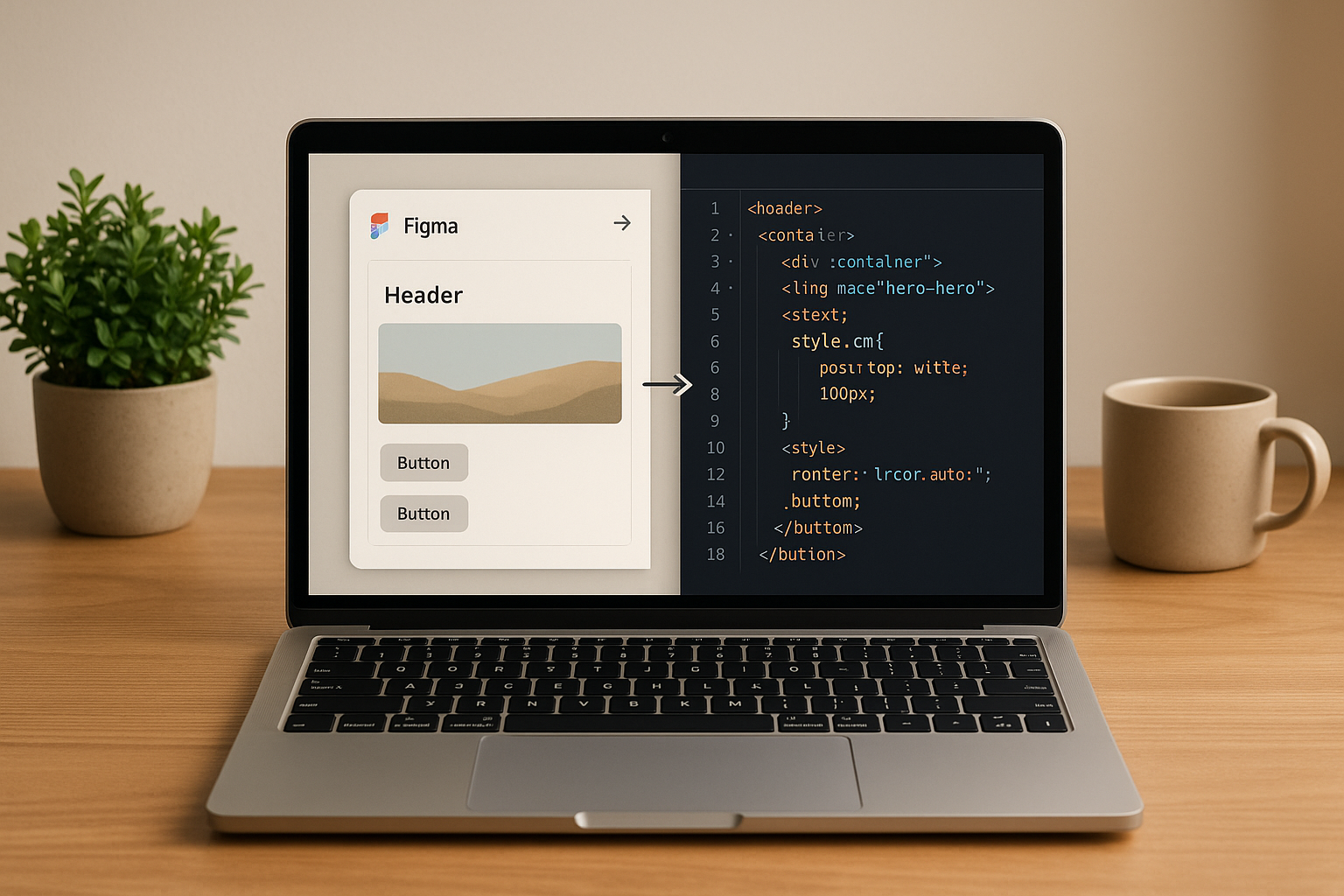
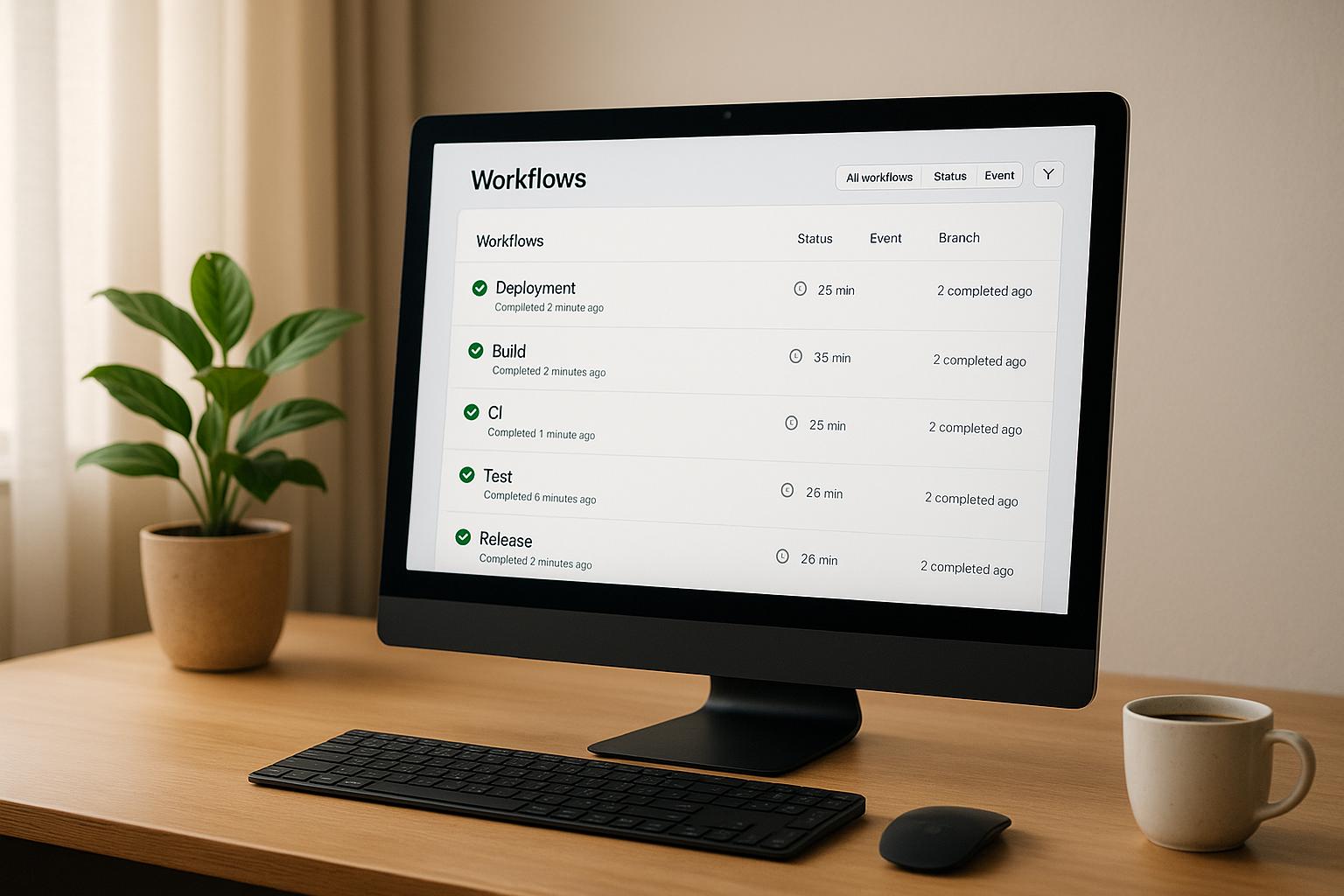



Leave a Reply